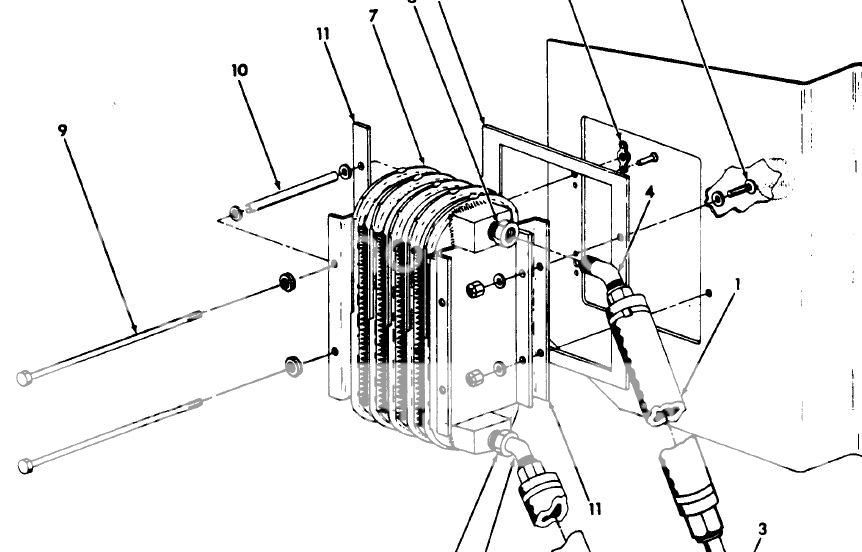Guilhermepilot
Well Known Member
I saw some theads saying that the 10 row aero clssic 8000081 oil cooler fits behind n4 cilynder, but mine it is touching my engine mount, seems there is no space, I will be more confortable with some clearence
Russ, rear inboard flange gone, but the inboard side of the cooler is not so still to the baffles. Even if he puts a stiffener from the case, or head, to the center, it should be ok. The inboard, forward flange should be using a fitted plate as a doubler anyway to spread the loads at the fasteners. .063 aluminum is good but a steel one would be better as it is stiffer.
So, if you think the clearance is good, then he should be ok. Besides, at this point the cooler is either going to be replaced because the flange is removed or because it breaks. And we are not sure it will break so why not use it and keep an eye on it?
He should use the same system on the outboard side where cracks have been seen in others and where it is much more stiffly secured to the head. Long bolts too.
Just an opinion.
I disagree with that opinion (if I understand it correctly... the text seems like it may have some typos?).
If it were mine, I would keep a very close eye on the inboard fwd flange... having both flanges for attachment with spacers in between, adds a lot of support to the flanges to resist fatigue cracks along the corner bend line of the fwd flanges.
Guys
Brazil is hot, average is 90 to 100 F
The clearence seems ok, once it is already cut, I will monitor, and test, if there cracks, replace all, with maybe a 9 row, I will fly and see, as a matter of fact tomorrow will be first start
I wonder if anyone has come up with a fix for a crack that runs top to bottom on the #4 baffle right at the radius that attaches to the oil cooler? I had a crack at 175 hours and then replaced all the alu parts that make up that assembly. Now at 80 more hours, a small crack is starting again. It just seems that the oil cooler adds too much weight to that corner? I have the stock cooler that came with the kit.
Thanks,
mlgpilot 525MV
Just as a counter-point: Many of us have had real cooling issues, both oil temp and CHT and do not have "an inefficient install". Having had many people inspect my install, including folks (lots of engineers) that have engines that run very cool, and after implementing every suggestion to the satisfaction of those making the suggestions, no-one could provide a definitive reason for my high oil temps, which I solved with a bigger oil cooler, and high CHTs which I solved with the anti splat cowl flaps.
The theory that makes the most sense to me is that my combination of IO-360 parallel valve engine with nickel ECI cylinders, 9.2:1 cylinders and electronic ignition makes a lot of heat and isn't as good at dissipating it as the Lycoming steel cylinders and the various variations that cool easily.
There is so much variation in the FWF choices that people make. Yes it is important to make sure your installation is as efficient as possible. But it is not always slovenly build technique that is the cause of high temperatures. Sometimes it's the choices we make. If I were to do it again, I would still make the same choices, but I would now know to install the higher capacity oil cooler and the cowl flaps right away. The problem is that we can't definitively identify ALL the things that lead to high temps. Certainly bad installation can be a factor but it is by no means the only one.
All in the spirit of education and recreation
Lots of reinforcement, and **** near polishing all the pieces to get every possible burr and starting point for cracks out of each piece.
It looks like you may have enough clearance.
But I'm concerned that the entire inboard/aft flange has been removed rather than just cutting a clearance arc like Vans specifies. Leaving some of this flange in-place to bolt through would help secure the oil cooler to the baffling.

